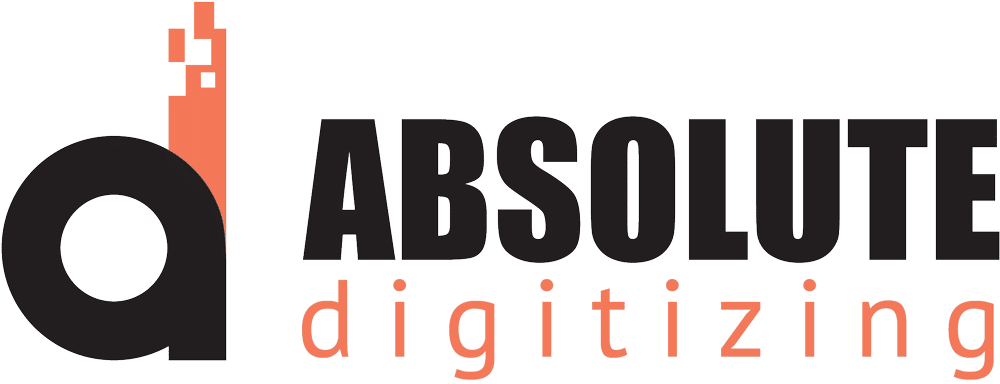Machine embroidery has gained immense popularity. It allows you to stitch logos, cartoons, floral designs, real pictures, and almost any image or sketch into embroidery. You have almost endless creative freedom in this process.
However, converting an image to an embroidery file is not a straightforward one-click procedure. It is a complex process and often requires professional assistance. We will explain this process in detail while keeping it as simple as possible. First, let’s understand the common image and embroidery file formats before delving into the conversion process.
Common Image and Embroidery File Formats

What is a JPG Format?
The JPG or JPEG format, derived from “Joint Photographic Experts Group,” is a widely used file format for storing digital images due to its efficient compression and high color depth supporting millions of colors. JPGs are compatible with almost every image software and hardware like computers, cell phones, cameras, and scanners. JPGs are one of the easiest image formats to use.
- Compression: Reduces file size while maintaining acceptable visual quality.
- Color Depth: Supports millions of colors, ideal for photographs and complex images.
- Wide Compatibility: Works with almost all image software and hardware.
Other Image Formats
- PNG (Portable Network Graphics): Known for its lossless compression and support for transparent backgrounds, making it ideal for images requiring clear and crisp details.
- BMP (Bitmap): A raster graphics image file format used to store bitmap digital images, independently of the display device.
- GIF (Graphics Interchange Format): Supports up to 256 colors and is commonly used for simple graphics and animations.
What is an Embroidery File Format?
Embroidery files contain the necessary instructions for an embroidery machine to create designs by stitching threads on a fabric. These instructions include details such as stitch types, colors, and sequences. Different embroidery machines use different file formats. Here are some common machine embroidery file formats:
- Janome: JEF
- Bernina: ART
- Husqvarna/Viking: HUS, VP3, VIP
- Brother/Babylock/Deco: PES, PEC (Check our blog on 5 best Brother Embroidery Machines)
- Singer: XXX
- Pfaff: PCD, PCM, PCS
- Tajima: DST
- Melco/Bravo: EXP
Choosing the Conversion Method
Now that we have understood both formats, it’s time to learn how the conversion actually happens. If you search over the internet, you will find that you can convert images to embroidery files by a number of methods. Let’s discuss these methods in detail.
1. Learning Embroidery Digitizing Software
Embroidery digitizing software is a tool for converting logos and designs into embroidery patterns that embroidery machines can understand. You can use this software to import image files from your computer and then transform them into detailed stitching instructions. These software have the necessary tools to adjust the colors, add text, and make sure everything looks perfect before you start embroidering. You can also see a preview of how the design will look when it is stitched out. This helps catch any mistakes and problems beforehand. Once you are happy with the design, you can save it in the appropriate embroidery format that your machine can read.
However, it is not easy to operate this type of software if you are a newbie. Converting images into embroidery files is not a piece of cake for an amateur. The reason is that it is not entirely an automated process and requires you to manually put instructions.
For instance, when you are converting an image into a digitized format, you have to manage multiple domains. These domains include stitch order, stitch density, stitch angle, stitch type, and areas of color. All these things are managed by skilled professionals called embroidery digitizers or designers.
It will require about a year for a beginner to be able to operate embroidery digitizing software efficiently. It also is a time-consuming job, as you have to pay attention to every little detail to manually convert an image into an embroidery file.
On the other hand, choosing to hire an in-house digitizer to handle these tasks and avoid the challenges mentioned above will require paying a full-time or part-time salary.
Lastly, this software alone comes with a hefty price tag. You have to purchase a complete software just to perform this one conversion. Therefore, if you need to do the conversion from an image to an embroidery file only occasionally, this is not a practical option for you.
But, if you want to make a career in embroidery, or you are someone who regularly requires conversion to a digitized format, this might be a reasonable option for you. Note that professional embroidery digitizing asks for a rigorous skill set and a dynamic approach to learning. It requires hours and hours of persistent effort and hard work. Needless to say, not everybody has such liberty with time and persistence in the learning effort.
2. Online Converter Tools
Another option that you usually get while searching to convert an image into an embroidery file is online converter tools. These types of tools claim that you can convert images to embroidery files with just a click but this is a deceptive process.
These online converters do not really deliver what they promise. They just scam people by redirecting them to ads or pages with which they generate revenue. Hence they offer no genuine solution.
Moreover, many of them are phishing links and steal your sensitive data or even corrupt your device with malware. So, it would not be wrong to say that this is a scam and you need to be extra careful while trying these online tools.
3. Auto-Digitizing
Auto-digitizing refers to a method that uses embroidery digitizing software to convert images into digitized formats automatically. The software works based on a set of algorithms that determine colors, layers, stitch count, etc., without any manual effort.
Auto-digitizing may look convenient at first, but it delivers poor quality results. Many people have experienced issues such as stitching problems, bird nesting, and a lack of professional appearance in the final embroidered designs. This technology is still evolving and will take time to mature.
However, auto-digitizing is only effective for very basic and typically single-color designs. Again, you will need to invest in buying embroidery digitizing software to perform auto-digitizing tasks, and it is not ideal to spend money on something that does not produce great results automatically without external help.
4. Using an Embroidery Digitizing Service
An embroidery digitizing service offers professional solutions for converting images into embroidery files. These services employ skilled digitizers who use embroidery digitizing software to create stitch patterns, adjust colors, and optimize designs for embroidery machines.
Clients can submit their designs in various formats, such as JPG, PNG, and BMP, and receive high-quality digitized files compatible with specific embroidery machine formats. Usually, the turnaround times are as fast as 2 to 12 hours, and the price starts at $10 per logo conversion. They are suitable equally for businesses and individuals looking to create beautifully embroidered products without the expertise or resources for in-house digitization. Outsourcing your jobs to a service offering custom digitizing is the most cost-effective and time-saving method.
Absolute Digitizing is a trusted service that can convert your images into embroidery files for various machine formats.
Converting Images to Embroidery Files – Step-by-Step Guide
If you know a bit about embroidery digitizing, you can change image files to embroidery files using these easy steps. However, it is often better to seek professional help for the best results.
Here is what you will need:
Software like Wilcom, Tajima Pulse, Hatch, or Ink/Stitch. These are all paid software except for Ink/Stitch, which is an open-source free digitizing software.
We will focus on using Wilcom Embroidery Software in this guide.
- Open Your Image: Load your image into Wilcom software and remember to save a copy.
- Crop the Image: Adjust the size to avoid mistakes later.
- Set the Size: Define the size of the design in inches, centimeters, or millimeters.
- Adjust Density: Set the stitch density according to the fabric type.
- Assign Stitch Types: Different parts of the image may need different stitch types like Run stitch, Satin stitch, or Fill stitch. Assign stitches accordingly.
- Group Similar Objects: Measure and group similar objects together, adjusting colors as needed.
- Define Stitch Areas: Carefully define stitch areas, ensuring the right tool for each part.
- Preview the Design: Use the software’s digital preview to check for any errors.
- Save as Embroidery File: Save your design in the appropriate embroidery file format.
Testing and Adjustments
Once you have converted your image to an embroidery file, use the software’s digital preview to see the final design. Double-check everything, including colors, density, stitch type, and overall look, to ensure accuracy and avoid distortions. Stitch a test sample before starting full production to ensure everything works as expected.
FAQs
What is the difference between manual digitization and auto-digitizing?
Manual digitization involves tracing images manually using embroidery software, requiring advanced skills and time. Auto-digitizing automates this process using the same software, saving time but often resulting in unsatisfactory outcomes.
Should I use free online converters to convert my image to an embroidery file?
No, using free online converters to convert your image to an embroidery file is not recommended. These services are often clickbait and rely on ads or may even attempt to steal your sensitive information or add malware to your computer. Moreover, they cannot convert an image to an embroidery file effectively.
Conclusion
We have discussed various methods for converting an image to an embroidery file. However, hiring an embroidery digitizing company proves to be the most practical approach for converting your image files into embroidery format files suitable for various embroidery machines. With no setup costs and conversion charges starting at as low as $10, you can get a quick turnaround time of 2 to 12 hours. The result is a professionally digitized file ensuring high-quality sew-out results. Get a free quote now!








